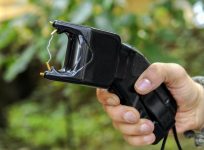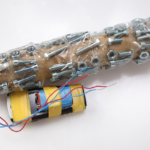Police Use of Tasers in the Spotlight

Tasers are weapons that are given to police officers for use only in certain situations. According to the NSW police operating procedures, officers are only meant to use Tasers in situations where they are in immediate danger, or are under threat of violence.
Tasers work by administering a jolt of electricity that temporarily incapacitates a person, and they can help police make an arrest, or restrain someone who is endangering themselves or others.
Although they are not generally considered to be deadly when used correctly, there have been deaths as a result of their use.
While police have been advised to use Tasers only when they are in imminent danger, case studies and CCTV footage have shown that this isn’t always the case.
Police have been filmed using Tasers on a handcuffed teenager and on suspects who were walking away from them, as well as on those who appeared to pose no imminent danger.
The use of Tasers has been criticised by a number of organisations, both internationally and in Australia.
The NSW Ombudsman has requested an overhaul of the system to make the state’s police officers more accountable for their use of Tasers.
In a case study of more than 2,000 incidents when tasers were used by police officers, the Ombudsman concluded that there were 27 instances when they should not have been used.
According to the operating procedures for Tasers in NSW, they should only be used in very specific situations, which include:
- To protect human life.
- To protect another officer or officers who may be in immediate danger.
- To protect from animal attack.
- To protect an officer from imminent danger of violence or actual bodily harm.
Some of the changes suggested in the NSW Ombudsman’s report include an overhaul of the operating procedures for Tasers and increased disciplinary measures for officers who don’t abide by the rules or misuse Tasers.
The recommendations include not allowing Tasers to be used for fleeing suspects or those in handcuffs unless there are exceptional circumstances.
The report also recommended that Tasers not be used directly against the body or be fired for more than 15 seconds at a time.
The recommendations also include improving police training before they are authorised to use the devices, and changing the process for reviewing Taser use.
The public attention surrounding Taser use by police officers has been increasing since Brazilian student Roberto Laudisio Curti died in Sydney last year after having an adverse reaction following a Taser incident.
The 21-year-old student died in 2012 after being tasered 14 times while police were arresting him for stealing from a convenience store in the CBD.
The NSW Director of Public Prosecutions (DPP) has advised that there is enough evidence to charge four officers with assault occasioning actual bodily harm/ and common assault over the incident.
The officers have continued to work since the incident, but have had their Tasers taken away.
Tasers can be dangerous and it is important that police take their use seriously and that officers are held accountable for any improper use of Tasers.
Hopefully the Ombudsman report will help pave the way for new legislation governing the use of Tasers, and reduce the chance of any more deaths occurring as a result of inappropriate Taser use on behalf of police.
However, given the decreasing accountability of police in recent years and the pro-police reporting of the media and resulting increase in police powers, this is doubtful.






